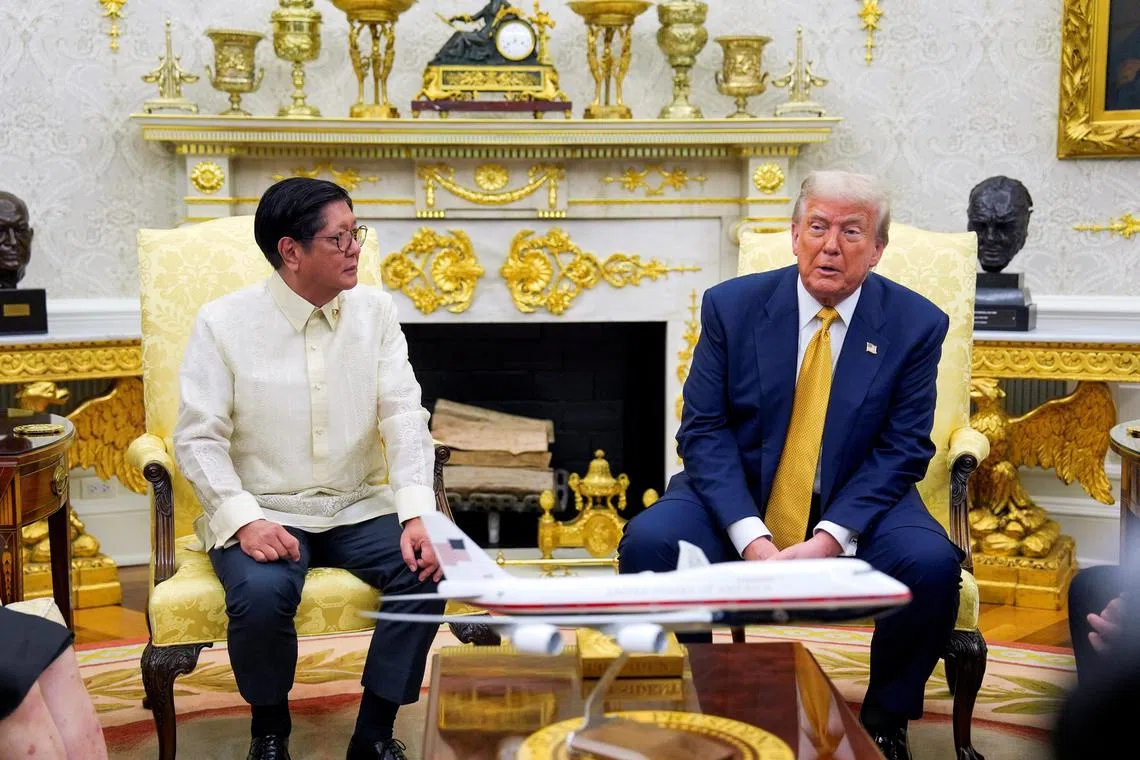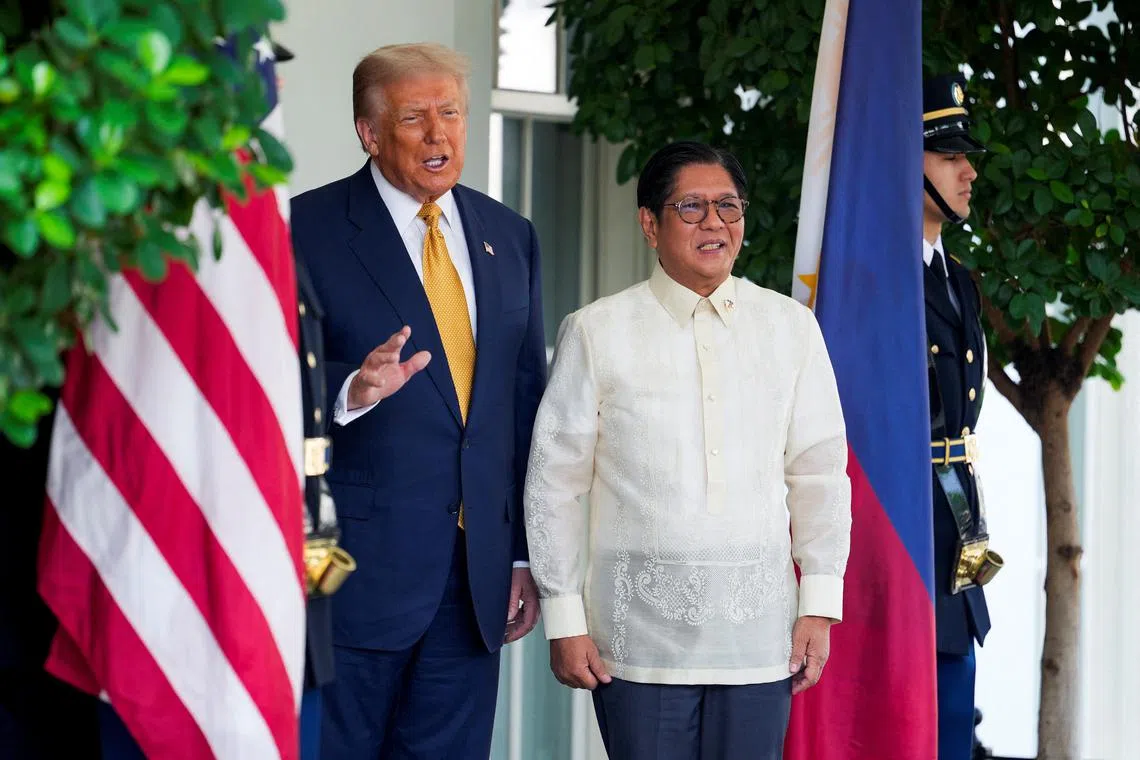Trump says US will charge 19% tariff on goods from Philippines, down from 20%
Sign up now: Get ST's newsletters delivered to your inbox

Philippine President Ferdinand Marcos Jr (left) meeting US President Donald Trump at the White House on July 22.
PHOTO: REUTERS
Follow topic:
- Trump welcomed Marcos to discuss a major trade deal, aiming to reduce the US$5 billion trade deficit with the Philippines.
- Trump highlighted the strong US-Philippine military ties, noting recent joint drills and the Philippines' strategic importance.
- Marcos seeks to strengthen the Philippines economically to enhance its role as a robust US partner in the Indo-Pacific region.
AI generated
WASHINGTON – US President Donald Trump on July 22 announced a new 19 per cent tariff rate for goods from the Philippines after what he called a “beautiful visit” by Philippine President Ferdinand Marcos Jr to the White House, saying US goods would pay zero tariffs.
Mr Trump posted the news on his Truth Social media platform after meeting Mr Marcos in the Oval Office, where he had signalled a deal could be reached during the visit.
“It was a beautiful visit, and we concluded our Trade Deal, whereby The Philippines is going OPEN MARKET with the United States, and ZERO Tariffs. The Philippines will pay a 19 per cent Tariff,” Mr Trump said, calling Mr Marcos a “very good and tough negotiator”.
Mr Trump said the two Pacific allies would also work together militarily but gave no details.
Mr Marcos, the first South-east Asian leader to meet Mr Trump in his second term, told reporters at the start of the meeting that the US was his country’s “strongest, closest, most reliable ally”.
The 19 per cent tariff rate was just below the 20 per cent threatened by Mr Trump earlier in July, but above the 17 per cent rate set in April when Mr Trump announced what he called reciprocal tariff rates for dozens of countries. It matches the 19 per cent rate announced for Indonesia and bests Vietnam’s slightly higher rate of 20 per cent.
The US had a deficit of nearly US$5 billion (S$6.4 billion) with the Philippines in 2024 on bilateral goods trade of US$23.5 billion.
Mr Trump said the two countries did “a lot of business” with each other, adding the “very big numbers” in the trade agreement would only grow larger.
Mr Gregory Poling, a South-east Asia expert at Washington’s Centre for Strategic and International Studies, said it was too early to say much about the Philippines trade deal since no details had been released, as was the case with similar pacts with Indonesia and Vietnam.
“At the end of the day, I don’t think the Philippine government is sweating the final number so long as it keeps Philippine-made goods competitive with those of its neighbours, which this does,” Mr Poling said.
The White House announced further details of a framework for a US-Indonesia trade agreement on July 22, saying negotiators were due to finalise the terms in coming weeks.
During the Oval Office event, Mr Trump said he may visit China for a landmark trip “in the not too distant future” and noted the Philippines had distanced itself from Beijing after his election in November 2024.
“The country was maybe tilting towards China, but we un-tilted it very, very quickly,” Mr Trump said.
The US President has sought to lower tensions with Beijing in recent weeks after pausing a tit-for-tat tariff war that has upended global trade and supply chains. US Treasury Secretary Scott Bessent said on July 22 he would meet Chinese officials in Sweden next week.
Critics warn Mr Trump’s tariffs on nearly all foreign goods could boost prices for US consumers, complicating his push for the Federal Reserve to lower interest rates.
No comment was immediately available from Mr Marcos, who did not speak to reporters before leaving the White House grounds.

US President Donald Trump (left) welcoming Philippine President Ferdinand Marcos Jr to the White House on July 22.
PHOTO: REUTERS
Philippine Assistant Foreign Secretary Raquel Solano said last week that trade officials have been working with their US counterparts, seeking to seal a “mutually acceptable and mutually beneficial” deal.
Protesters gathered near the White House as Mr Marcos arrived, demanding the Philippine leader address pleas of Filipino Americans and migrant workers who have made multiple requests for support amid US immigration raids.
Mr Trump underscored the importance of the US-Philippine military relationship.
“They’re a very important nation militarily, and we’ve had some great drills lately,” he said.
Mr Marcos, who arrived in Washington on July 20,
During his trip, he will also meet US business leaders investing in the Philippines. Philippine officials say Mr Marcos planned to stress that Manila must become economically stronger if it is to serve as a truly robust US partner in the Indo-Pacific.
He told reporters his country was modernising its military in response to tensions with Beijing in the South China Sea. REUTERS

